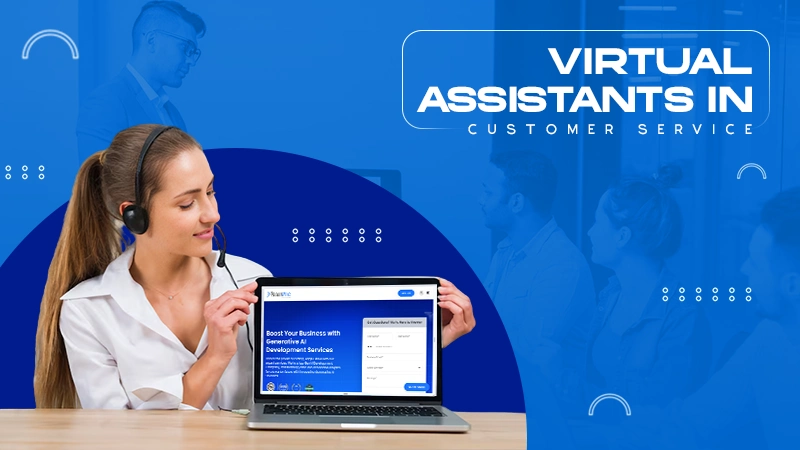On average, 8–12 weeks for a minimal setup, depending on scope and complexity.
Data Warehouse Implementation Plan: Building a Strong Foundation for Business Intelligence
In the digital era, companies generate vast amounts of data daily. To turn this data into valuable insights, organizations must build a data warehouse that centralizes, organizes, and secures business information. A well-planned implementation ensures that decision-makers access accurate and timely reports, powering growth and efficiency. If you are looking for expert guidance, CHI SOftware offers tailored solutions to help enterprises design, implement, and optimize their data warehouse infrastructure effectively.
Why Do You Need a Data Warehouse?
A data warehouse consolidates information from multiple sources such as CRMs, ERPs, marketing tools, and transactional databases into a single, reliable repository. The advantages include:
- Centralized reporting for consistent decision-making
- Improved performance of analytical queries compared to OLTP systems
- Data governance with access control and auditing
- Scalability to handle large volumes of structured and semi-structured data
Unlike traditional systems, today’s cloud-based warehouses integrate seamlessly with modern tools, making it easier to build a data warehouse that is cost-effective and future-ready.
Current Trends in Data Warehousing
Modern data warehouses are evolving rapidly. Organizations adopting them must stay aware of emerging trends:
- Cloud-first approach: Platforms like Snowflake, Google BigQuery, and Amazon Redshift dominate the market.
- Real-time analytics: Businesses increasingly require near real-time reporting.
- DataOps and automation: Automated testing, CI/CD pipelines, and observability tools ensure reliability.
- Hybrid architectures: Many companies combine data lakes and warehouses into unified “lakehouse” solutions.
By leveraging such trends, companies can maximize efficiency. Teams like CHI SOftware specialize in aligning these trends with business objectives to build a data warehouse that delivers long-term value.
Step-by-Step Data Warehouse Implementation Plan
1. Define Scope and Objectives
Every successful project starts with clarity. Determine what business questions the warehouse must answer. Examples: customer acquisition cost, revenue by region, or churn rates. Defining scope prevents wasted effort and ensures quick wins.
2. Select the Right Platform
Choosing the right technology stack is crucial. Leading cloud data warehouses include:
| Platform | Key Strengths | Ideal Use Case |
| Snowflake | Elastic compute, easy scaling | Enterprises needing cross-region support |
| BigQuery | Serverless, simple pricing | Organizations with Google Cloud ecosystem |
| Redshift | Mature ecosystem | AWS-focused businesses |
| Databricks SQL | Combines lake and warehouse | AI/ML-driven companies |
Expert teams like CHI SOftware can guide enterprises through vendor selection to ensure cost efficiency and scalability.
3. Data Modeling and Architecture
A typical structure includes three layers:
- Staging (Raw Data): Incoming data in its original format
- Integration (Cleansed Data): Standardized and validated information
- Presentation (Data Marts): Business-ready facts and dimensions for reporting
Following a layered approach ensures better maintenance and governance.
4. Data Ingestion and Transformation
Tools like Fivetran, Airbyte, or custom pipelines bring data into the warehouse. Transformations are best handled with modern frameworks such as dbt (data build tool), ensuring version control, testing, and documentation.
5. Governance, Security, and Compliance
Data governance protects sensitive information while ensuring regulatory compliance. Key practices include:
- Role-based access control
- Data masking for PII
- Audit trails for monitoring usage
- Compliance alignment with GDPR, HIPAA, or SOC2
6. Business Intelligence and Analytics
Once the warehouse is populated, BI tools like Tableau, Power BI, or Looker connect to deliver dashboards and insights. To avoid metric inconsistencies, organizations must define KPIs in a semantic layer and maintain certified dashboards.
Best Practices for a Smooth Implementation
- Start small, scale fast: Focus on one or two domains (finance, sales) before expanding.
- Automate testing: Validate data quality with automated checks.
- Optimize performance: Partitioning, clustering, and caching improve query speed.
- Control costs: Monitor query usage and enforce budget alerts.
- Invest in training: Ensure teams understand how to query and visualize data.
Common Challenges and How to Overcome Them
- Data silos: Break down by integrating all sources early.
- High costs: Use auto-scaling and cost monitoring tools.
- Schema changes: Implement data contracts with source owners.
- Lack of ownership: Assign data stewards for every domain.
Engaging experts like CHI SOftware helps mitigate these challenges with proven frameworks and tools to build a data warehouse that is resilient and future-proof
Implementation Timeline (Example)
| Phase | Duration | Key Deliverables |
| Discovery & Planning | 2 weeks | Business objectives, success metrics |
| Platform Setup | 2 weeks | Cloud warehouse environment |
| Data Ingestion | 3 weeks | Initial source pipelines |
| Modeling & Transformation | 3 weeks | Staging, integration, marts |
| BI & Rollout | 2 weeks | Dashboards, training, governance policies |
This timeline ensures that an MVP (Minimum Viable Product) can be delivered in 12 weeks.
Frequently Asked Questions
How long does it take to build a data warehouse?
Should we choose cloud or on-premise?
Cloud is generally preferred due to scalability and reduced infrastructure management.
What’s the biggest mistake companies make?
Starting too broad without clear goals leading to cost overruns and delays.
How does CHI SOftware help?
They provide end-to-end services from strategy and design to implementation and optimization, ensuring businesses can confidently build a data warehouse that aligns with their needs.
Conclusion
Implementing a data warehouse is not just a technical project—it’s a strategic investment in data-driven decision-making. From selecting the right platform to ensuring governance and performance, every step requires planning and expertise. By partnering with chisw.comorganizations can accelerate delivery, minimize risks, and confidently build a data warehouse that scales with their growth.
Ever try to upload a big file on a laptop that sounds like it’s about to take off? Or wait…
It is noteworthy that a significant 86% of business leaders attribute workplace failures to ineffective and non-collaborative teamwork. The essential…
Has your website been experiencing excessive inaccessibility due to error code 521? This is a technical code that shows a…
Did you know? An ideal capacity utilization rate typically ranges from 85% to 90%. Operating within this range indicates strong…
Imagine a sudden decrease in your business, not for any reason related to your product, but because of your login…
Selecting the right manufacturing software can shape the way a business manages production, tracks costs, and meets customer expectations. With…
Have you experienced that most of the customer service calls come with endless menus, and you have to repeat your…
In the contemporary era, nearly all aspects of life are intricately linked to digital systems. Sectors such as retail, finance,…
In today’s increasingly competitive landscape, service providers must strike a balance between resource management, client satisfaction, and profitability. Using spreadsheets…









